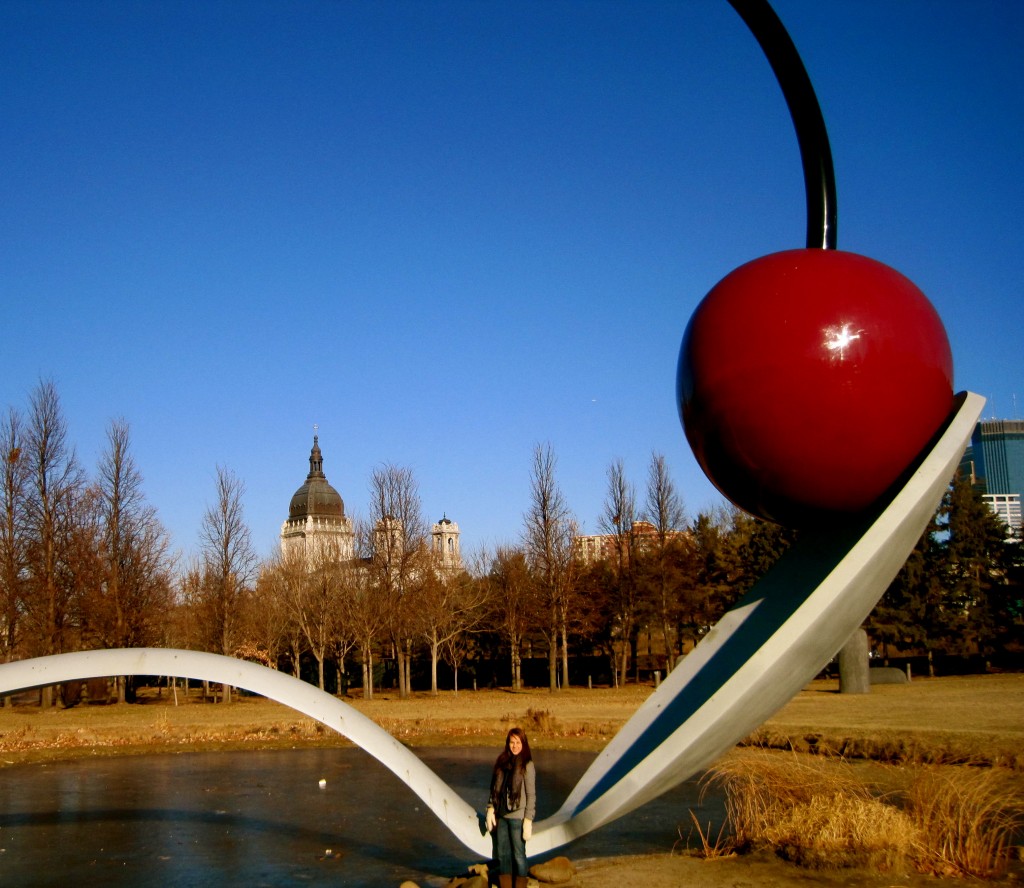
Pictures: Minneapolis, Minnesota
A year ago, I returned to Minnesota with a carload of possessions. The last time I’d lived in Minneapolis was 2001, about two and one-half months before 9/11; I’d left to start my freshmen year at West Point.
In the years that followed, I thought obsessively about what I wanted to be after I got out of the Army. Those ideas — too countless to name — ran the gamut from physician to public health practitioner to Peace Corps volunteer.
I was so indecisive that my father once asked me how I’d made the decision to go to West Point; the commitment entailed four years of college and five years of active duty service.
“It was easier to make decisions back then,” I told him, “because the world seemed so much smaller.”
What I meant is that the years away from Minnesota — during which time I traveled to 27 countries and lived in four American states and two countries — opened me up to the world and her possibilities.
At times, it felt as though there were too many possibilities, too many places to live, too many subjects to study, too many jobs to hold. During those years, I also began to self-identify as a “traveler,” and I saw just enough of the world to understand how little of it I’d seen.
I must caveat that struggling to decide between a multitude of possibilities is certainly a “first world problem.” Many people I’ve met are struggling to make it another day. To them, the possibilities appear limited; dreaming is much more difficult and less likely.
When I returned to Minnesota, the “traveler” in me felt like a failure, despite the fact that I’d weighed the possibilities and concluded that this was the best one.
Intuitively I knew that returning to Minneapolis — and learning to love it enough to not feel as though I always needed to be running away from it — was the logical next step. But, yet, I experienced moments of depression and anxiety; I felt like my decision had closed the door on traveling.
 Last October, a man I love, named Adam, suggested I read Bill Holm’s “The Heart Can Be Filled Anywhere on Earth.” Holm was an American poet, essayist, memoirist, and musician, who was born near Minneota, Minnesota (a small city with a population of 1,376 in 2012).
Last October, a man I love, named Adam, suggested I read Bill Holm’s “The Heart Can Be Filled Anywhere on Earth.” Holm was an American poet, essayist, memoirist, and musician, who was born near Minneota, Minnesota (a small city with a population of 1,376 in 2012).
Growing up, Holm’s definition of failure was “to die in Minneota” and after leaving as a young adult, he lived all over the world. When he returned 20 years later, he was broke, divorced, and depressed. But in the months that followed, he discovered treasure after treasure in his hometown, mostly through his conversations with city elders.
Holm did not catapult his way onto my list of favorite authors, but his story of returning to your roots — and learning to appreciate them — resonated with me.
 Since October, I’ve read dozens of books. These books have been set all over the world, and they’ve taken me to places like Afghanistan, Arizona, India, Iraq and The Bronx.
Since October, I’ve read dozens of books. These books have been set all over the world, and they’ve taken me to places like Afghanistan, Arizona, India, Iraq and The Bronx.
Since October, I’ve also been privy to dozens of personal stories, largely through my work as a health care program coordinator. People like Jorge, Charles, Judy, and Ron have tried to explain to me what it’s like to be poor and homeless, to have depression, alcoholism, schizophrenia, and diabetes type 1.5.
The lands of chemical dependency, mental illness, homelessness, and poverty are largely foreign to me, and I can’t claim to understand more than a fraction of these people’s experiences. All the same, the conversations — like the books I’ve read — have taken me to new places and made me understand the world a bit better.
The other day, I was startled to realize that in the past 12 months I’ve traveled no farther (physically) than Hayward, Wisconsin or Duluth, Minnesota (two cities 150 miles from Minneapolis). Yet, the books I’ve read and the stories I’ve heard make me feel like I’ve traveled thousands of miles. (Not to mention all the miles I’ve “traveled” through my relationships with friends and family.)
Staying close to home this year has made me realize that “travel” isn’t so much an act of moving from physical location to physical location, as it is a way of perceiving the world. A “traveler,” I now realize, is someone who brings attributes like curiosity, open-mindedness, and a willingness to take risks to their encounters with people and places.
Those encounters can happen anywhere.
Jim Molnar, a travel journalist and old writing instructor of mine, had this to say: “Traveling is a way of seeing…a way of being. It doesn’t necessarily require that we go beyond our own backyards, our own neighborhoods, or our own communities, which offer as much opportunity to learn and grown as sitting in a Paris café…or spending a year in a Bangladesh garment factory.”
It’s true; the heart can be filled anywhere on Earth.
That said, I do look forward to strapping on a backpack and visiting other countries, again, and I’ve been putting a few hundred dollars into a travel account each month since January with that express purpose. But, while the savings slowly accrue, it’s a relief to know that there’s still opportunity to travel every day, anywhere I go.
